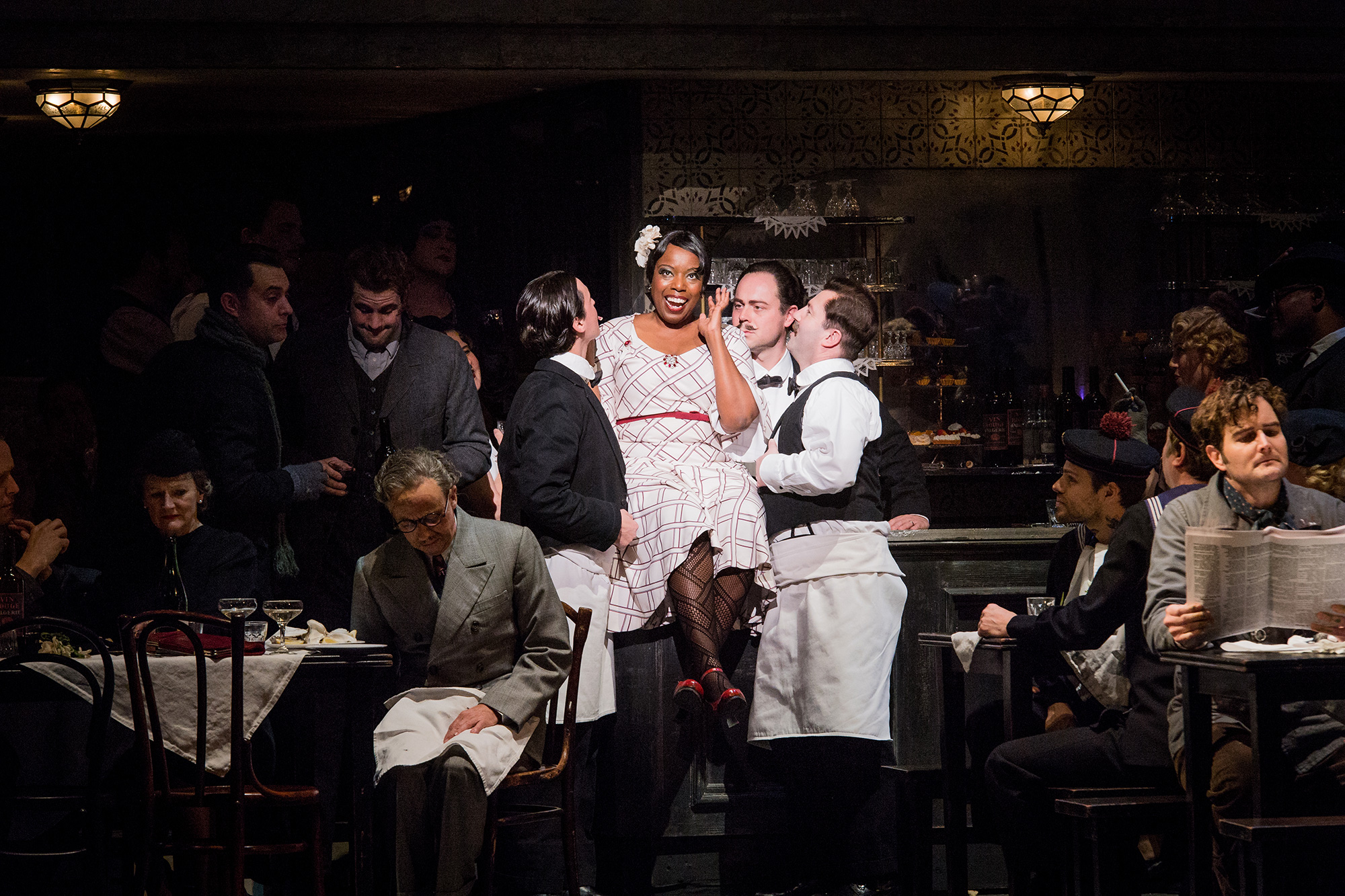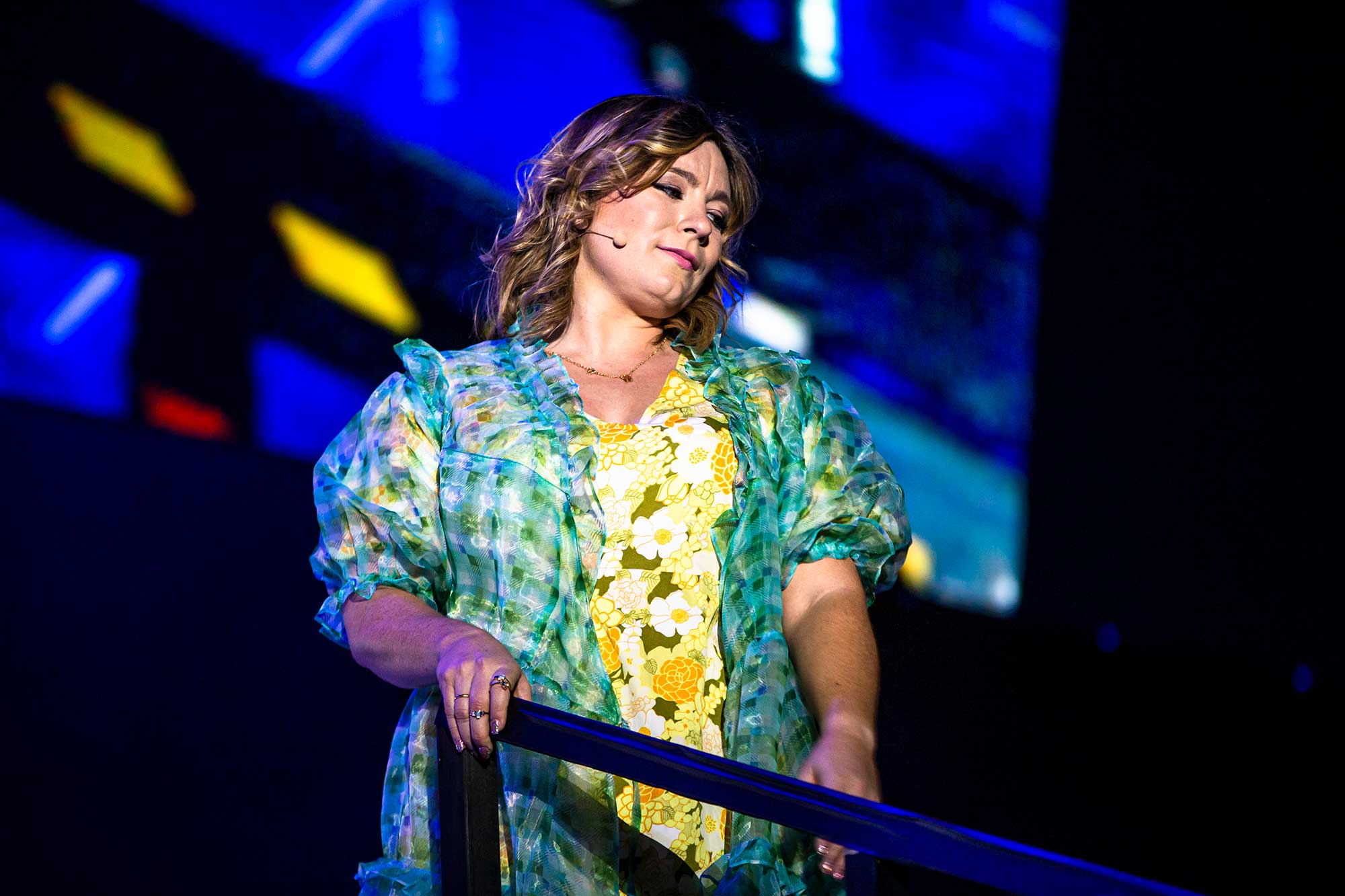La bohème: Videos





La bohème Synopsis
The action is set in Paris during the early 1930s.
Act I
It is Christmas Eve. Marcello, a painter, is trying to create a monotype in the extreme cold of a studio he shares with Rodolfo, a writer; Rodolfo volunteers to warm them both up by burning the manuscript of his play. Their friends arrive: Colline, despondent that he has failed to sell any books, and Schaunard, triumphant with money and food and wine. He proposes that they celebrate at the Café Momus. Just as they are about to leave, the landlord arrives with a demand for rent. They manage to avoid paying and set off, leaving Rodolfo behind to finish an article.
There is a knock at the door. It is Mimì, a neighbour, who is so weak that she faints. Rodolfo revives her and helps her to look for the key she has dropped; in the darkness, their hands touch. From the street below, Rodolfo’s friends call out for him to hurry up; he promises to join them with Mimì.
Act II
Outside Café Momus, last-minute Christmas shopping is in progress. Rodolfo introduces Mimì to his friends. Marcello loses his temper when his old flame, Musetta, walks by with Alcindoro, her companion; his upper-class impatience drives her to make an outrageous scene. Finally, she despatches Alcindoro to buy her a pair of shoes and throws herself into Marcello’s arms. The waiter arrives with the bill. As a military tattoo passes by, Musetta instructs the Bohemians to add their bill to hers: Alcindoro can settle them both.
Act III
On a cold February dawn, people enter the district looking for work. Mimì asks Marcello to speak to Rodolfo for her because his jealousy has made their life together impossible. She overhears the men talking about her: Rodolfo believes she is so ill that her only chance of recovery is to leave him and his life of poverty. Marcello and Musetta quarrel while Rodolfo and Mimì confront the necessity of separation.
Act IV
It is spring. Marcello and Rodolfo are alone again, trying to work, though their thoughts stray to their absent lovers. Schaunard and Colline bring some meagre food and the four friends pretend that they are enjoying a fine dinner party with dancing. They are interrupted when Musetta bursts in to say that Mimì is dying. She wants to be with Rodolfo. The friends do what they can but it is too late to save her.
Frequently asked questions about La bohème
Set in 19th-century Paris, La bohème is about the lives of a group of struggling young artists.
Based on Henry Murger’s novel Scenes de la vie de Bohème, the opera follows a love story between a poet named Rodolfo and Mimi, a seamstress, as they are forced to face the challenges of Mimi’s declining health and the realities of living in Paris’ Latin Quarter during the 1830s.
The relationships and hardships faced by the pair along with their friends Marcello and Musetta are explored, alongside the effects of poverty, illness and youthful passion. A poignant take on the fleeting nature of happiness, La bohème is an everlasting tale of tragic romance.
Translated into English, ‘La bohème’ is ‘The Bohemian’. This refers to someone who leads an unconventional and artistic life, as well as disregarding the stereotypical social norms of their society. In the context of the opera La bohème, this is referring to the group of artists at the centre of the story.
Italian composer Giacomo Puccini composed La bohème as well as several other well-known operas.
Puccini is known for his ability to depict the complex emotions and struggles of his characters using his rich melodies and expressive orchestrations.
While the setting for La bohème is in Paris, the opera was originally written by Italian composer Giacomo Puccini and performed his native Italian.
However, at ENO, we perform La bohème in English with the words displayed above the stage (surtitles). We believe that singing in English enhances the emotional connection between performers and audiences.
The text of the opera was written by Luigi Illica and Giuseppe Giacosa. The compelling libretto was a result of the combination of Illica’s story and dialogue, and Giacosa’s lyrical aspects and refinements of the text.
La bohème consists of four acts:
Act one: Introduction of the characters and setting of the stage for Rodolfo and Mimì’s love story.
Act two: Set on a lively Parisian Street and focussing on the complex relationships between characters.
Act three: Depicts a cold winter morning where our characters are struggling with Mimì’s declining health and their increasing battle with poverty.
Act four: Returning to the garret, the story reaches its conclusion.
Following Italian pronunciation, La bohème is pronounced as ‘lah boh-EM’.
Yes. bohème is widely considered as one of the greatest and most beloved operas of all time.
Its popularity has been sustained since the 1896 premiere and it continues to captivate audiences globally, with Puccini’s score for La bohème praised for its ability to capture a range of emotions.
Yes. La bohème is widely considered as one of the greatest and most beloved operas of all time.
Its popularity has been sustained since the 1896 premiere, and it continues to captivate audiences globally – with Puccini’s score for La bohème praised for its ability to capture a range of emotions.
There is a wide selection of songs performed in La bohème that are argued to be the best.
However, the most popular choices are Rodolfo’s aria ‘Che gelida manina’ (What a frozen little hand, let me warm it for you) and Musetta’s aria ‘Quando m’en vo’ known in English as ‘Musetta’s Waltz’.

